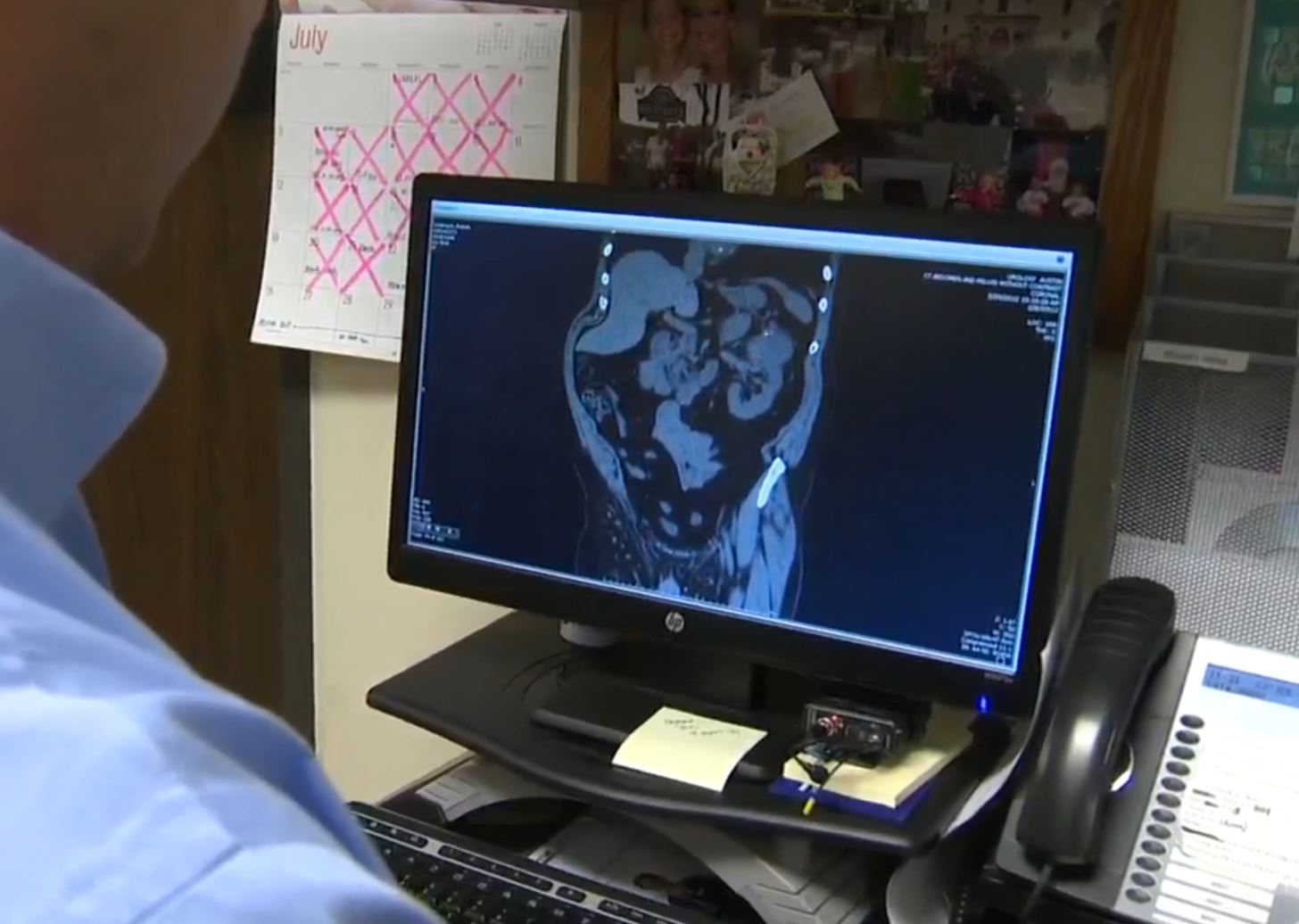AUSTIN -- Imagine waking up one morning with no real physical problems to speak of and learning you have Stage IV cancer. It's the sad reality for many kidney cancer patients, but technology is offering a second chance at life.
That technology is called cryotherapy. When doctors use it to treat cancerous tumors in kidneys it allows them to preserve all or as much of the kidney as possible and can dramatically improve the survival rate, which -- for Stage IV patients -- is less than 10 percent.
Bob Greeness, 67, of Bastrop noticed a tiny drop of his blood where it shouldn't be three years ago.
"I didn't know I had problems," Greeness said.
But he had big problems. His MRI indicated one of his kidneys was three times as big as the other. Greeness was suffering from Stage IV kidney cancer.
"I really didn't know what stage IV was, so I asked them," said Greeness. "They said there was no stage V."
"A lot of these kidney cancers -- when they show symptoms -- are stage III or IV and are quite advanced," said Dr. David Cuellar, a urological surgeon with Urology Austin. "That's why it's a difficult cancer to treat."
Cuellar removed the cancerous kidney from Greeness, but discovered the cancer had spilled over to the other kidney – so the risks of another surgery are much higher.
"Because there isn't another kidney to support him during that surgery on the kidney that's having the problem," Cuellar said of the risks.
It's a two-fold problem.
In the past – surgeons would have to remove a portion of the remaining kidney and then reconstruct it to avoid dangerous leakage. The other problem involves clamping the artery and vein.
"Clamping an artery and vein when you only have one kidney means there's no kidney for 20-30 minutes," said Cuellar. "You run the risk of that kidney failing and not fully recovering."
So Cuellar opted for cryotherapy, which inserts argon gas directly into the tumor, freezing it at -40 degrees. The tumor is thawed, then frozen again, insuring the cancerous tissue is destroyed.
Now three years removed from the second procedure, Greeness says he feels great.
"I'm almost in better shape now than I was before," he said.
The survival rate for Stage IV kidney cancer patients is less than 10 percent. Since his cancer was stage IV Greeness takes a chemotherapy pill once a day to keep it from returning. He says having to undergo chemo is not nearly the chore as it would be if he were also on dialysis.


